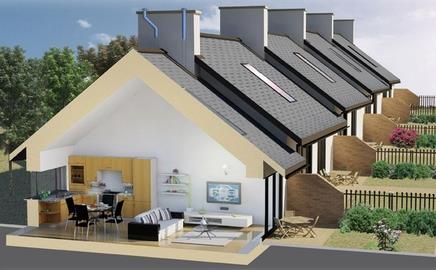The UK has long admired the German Passivhaus method for building homes with rock-bottom carbon emissions. Now the gold standard has come to Sunderland
The consultation on the definition of zero carbon states that our energy-efficiency standards should be “broadly equivalent” to the German low-energy standard Passivhaus in 2016, whichmakes the fact that developer Gentoo has started on site with the first large-scale, Passivhaus-certified development in the UK all the more significant. Devereux Architects is the Passivhaus consultant on the scheme of bungalows in Sunderland and Alan Clarke is the energy and mechanical consultant. These homes will not have a conventional heating system but instead will have a super-insulated and air-tight envelope. Fresh air will be provided by a mechanical ventilation heat recovery system (MVHR). The annual heating and hot water bill for each home is estimated to be £70. Here’s how they work...
The MVHR draws fresh air from outdoors as it expels stale air from indoors. The intake and exhaust air pass through a heat exchanger which transfers the warmth from the exhaust to the intake air. The warmed fresh air is then delivered to rooms through a network of hidden ducts. Studies indicate that the unit has an average annual carbon coefficient of performance of 6. So, for every 1kg of carbon emitted to run the MVHR, it saves 6kg. The example temperatures illustrate the performance of the unit without any top-up heating being supplied. Whenever the external temperature is 2ºC or more below the internal temperature, the MVHR produces a net energy gain. If the external temperature is ever 2ºC or more over the internal temperature with the windows shut, the MVHR will help to keep the interior cool.
MVHR unit: Atmos175DC by Paul, supplied by the Green Building Store.
Downloads
Diagram
Other, Size 0 kbDetails of junctions
Other, Size 0 kbMechanical ventilation heat recovery
Other, Size 0 kb
Topics
The Regs Files 2009

- 1
- 2
- 3
 Currently
reading
Currently
reading
Green Haus: how to do Passivhaus
- 5
- 6
- 7
- 8
- 9
- 10
- 11
- 12
- 13
- 14
- 15

















































No comments yet